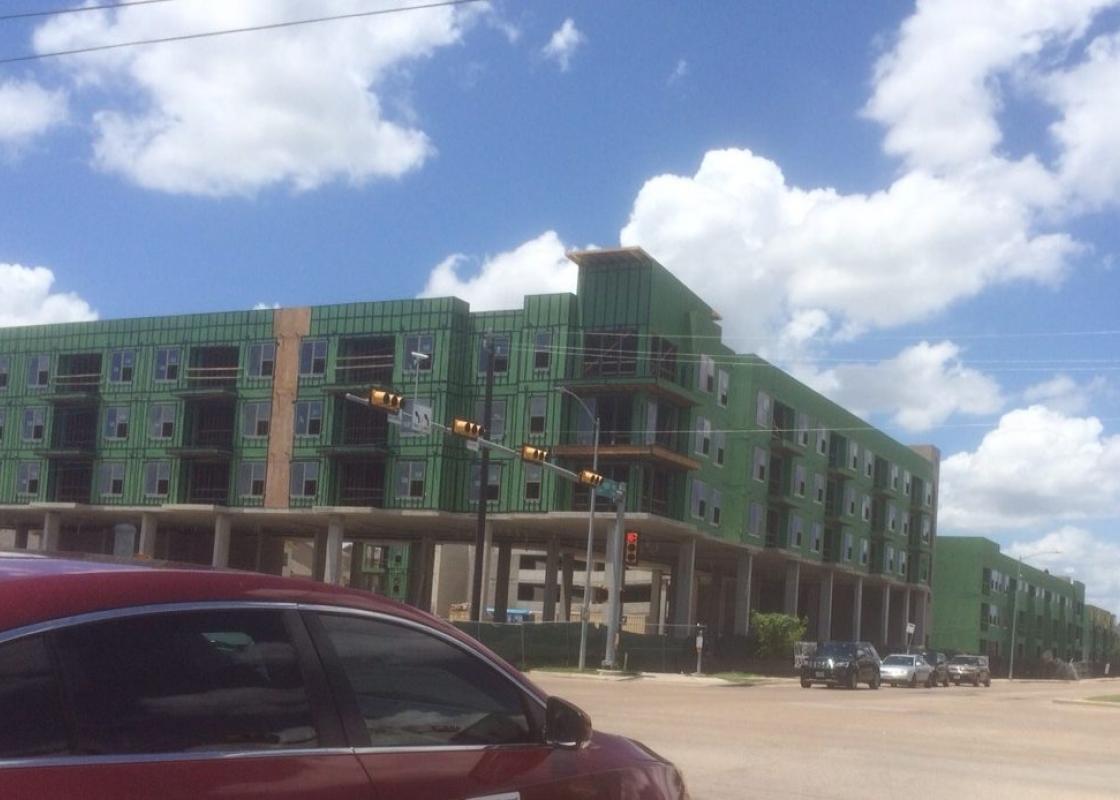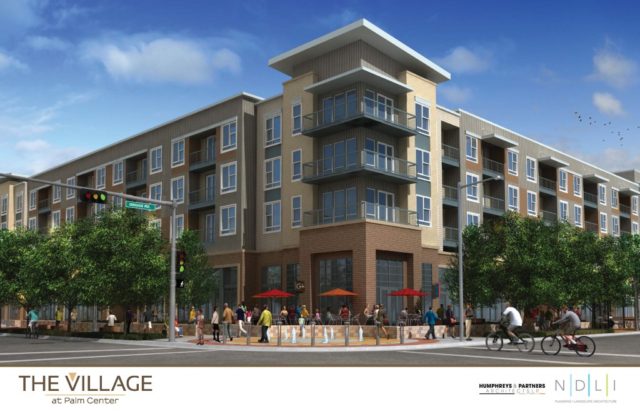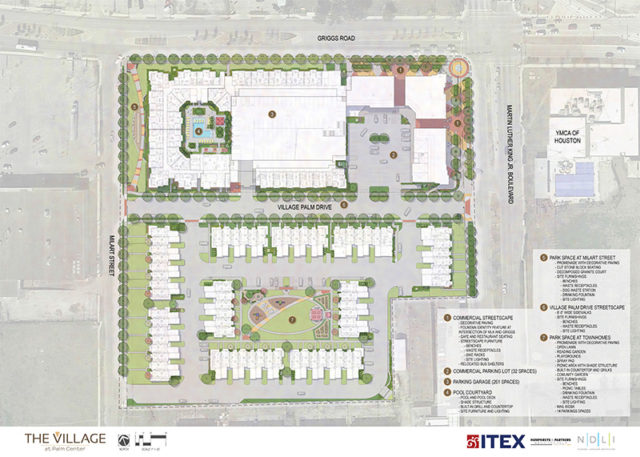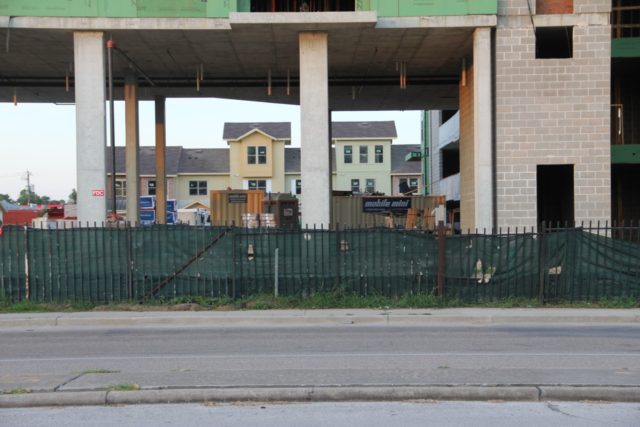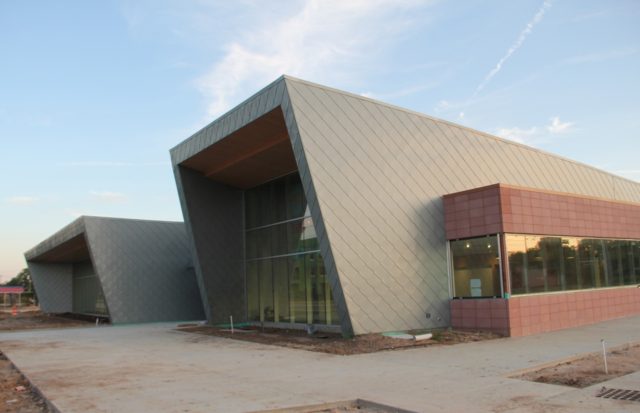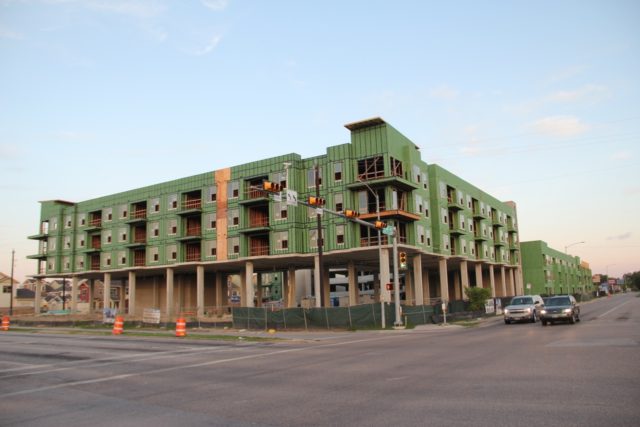This article is an adapted excerpt from "Big Mixed-Use Developments and the Remaking of Houston" in Cite 98, which examines the economics of architecture and the way that developers, banks, and other institutions shape the built environment.
Houston is in bind. We expect to welcome millions more people into the region over the coming decades, and our economic model depends on that growth. A greater density of people will support better city services, more music, more grocery stores ... and, if these people are all driving, more traffic jams. What if a greater portion of our population lives along rail and bus lines, though? The fear is that an influx of well-heeled urbanites will drive out low-income people from the very places they have sustained through difficult years, and just when things are turning around. It's a fear founded on what has happened in neighborhoods like Freedmen's Town and the West End.
We can imagine a future in which neighborhoods change without a loss of community and history but where are the models? A development under construction now promises one way forward. The backstory, though complex, offers a path for the future of Houston.
In 2013, the Itex Group shared renderings for the Village at Palm Center at community meetings in Southeast Houston. The plans included 16,000 square-feet of retail space and over 200 housing units, some reserved for those with affordable-housing vouchers. The development was sited at the terminus of Houston METRO's new purple line at the location of a flea market.
The community feedback came back loud and clear. But not the kind we expect from neighborhoods responding to affordable housing plans like the pushback near the Galleria and elsewhere. In this case, the community did not tell the developers to go away or to eliminate the affordable housing components. Give us a more urban development, they said. Put the parking in the back and bring the retail up to the sidewalk.
Advocates like Minister Robert Muhammad, who has a doctorate in urban planning from Texas Southern University, and Cedric Douglas, a graduate of the Gerald D. Hines College of Architecture, helped others in the community to articulate a vision for a walkable and inclusive neighborhood in formal terms.
And the developers listened. Working with Humphreys & Partners, an architecture firm with offices in Dallas, they revised the plan.
“When you see the neighborhood leadership coalesce like it has in the Third Ward, it is amazing what you can accomplish,” says Clark Colvin, Executive Vice President at ITEX Group. “They know exactly what they want. They all have the same goals.”
That coalescing of leadership has to do with decades of organizing by many individuals and a veritable alphabet soup of organizations. Preston Roe and Paulette Wagner of Super Neighborhood 68 are among them. In 2011, a $100,000 grant from National Endowment for the Arts (NEA) to Carroll Parrott Blue and the University of Houston funded community-based planning for the area around The Palm Center (a 1955 outdoor shopping mall now used by nonprofits). The Southeast Houston Transformation Alliance (SEHTA) has carried forward the work begun under the NEA grant. Funding from Houston LISC to the Neighborhood Recovery CDC established the OST/South Union GO Neighborhood, which is a community-driven and comprehensive approach to development.
And that’s not all.
Colvin also notes the substantial investment in this predominantly African-American area by the city through its acquisition of The Palm Center, the expansion of light rail into the neighborhood by METRO, the building of a new library (Golemon & Rolf architects) and park, and the infrastructure improvements achieved via a tax increment reinvestment zone (TIRZ).
The Village at Palm Center is, in some respects, a test case for how the city might move forward with its new General Plan with concerted efforts to layer public investments and build what Mayor Turner has called "complete communities" and "opportunity neighborhoods throughout the city with affordable housing, quality schools, parks, and retail development." The impetus was the availability of Ike Disaster Funds. An open Request for Proposals (RFP) was put out by the city for developments in five neighborhoods, including Southeast Houston/OST.
To finance The Village at Palm Center, the ITEX Group leveraged the 4 percent Low Income Housing Tax Credit, or LIHTC (pronounced li-tech), vouchers for housing veterans close to the nearby Veterans Administration Hospital, $15.3 million from the Hurricane Ike Disaster Recovery Housing Program funds, and an undisclosed mix of loans and equity. Developers call this the "capital stack."
Confused yet?
Colvin stresses that navigating the complex world of building workforce and affordable housing requires the special expertise that the ITEX Group has acquired over years under the leadership of the late Ike Akbari. However, Colvin also stresses that it was the years of preparation by community groups working in the neighborhood that made the project possible.
“We wanted to make sure the people who lived in the neighborhood could remain,” says Gwen Fredrick, the Go Neighborhoods Community Coordinator.
The Village at Palm Center will be the first transit-oriented, mixed-use development with a mix of market-rate and affordable housing in Houston. The comprehensive approach to the entire Palm Center area points to a future in which Houston can leverage a mix of tools and funding streams to transform neighborhoods without displacing longtime residents. The acronyms are dizzying but the goals are common sense.
“Why not a coffee shop across from the library?” says Colvin. When he points out that 40,000 UH students are less than two miles away, the vision of a thriving retail center does not sound far-fetched. When I inquired about pre-leasing an apartment, I received an automated email response urging patience: "The office receives over 100 inquires per day..." Perhaps prospective tenants are bearing out the community support for the development.
Federal and City of Houston requirements for the Ike disaster funding require that developers engage community residents. “An added bonus,” says Blue, “is that the ITEX Group will make money off this project.” That point is, perhaps, what is so promising about The Village at Palm Center. If community groups have a meaningful voice, if comprehensive planning identifies the best sites, if all the various pots of public money are used in a comprehensive manner, and if developers profit while contributing to the greater good, then we can expect a bright future for this city. And those are conditions in which architects can do great work.
The Holy Grail for mixed-use developments would be a marriage of equity, urbanism, and design innovation. The twentieth-century version of that dream --- the Modernist union of aesthetics and social aims --- is said to have died with the failure of housing blocks like Pruitt-Igoe in St. Louis. Across the nation, however, more developments are returning to the old ideal but with sophisticated strategies of mixing incomes and uses. While the architecture of The Village at Palm Center may not be as innovative as the Via Verde building in New York or as modernist as the New Hope Housing developments here in Houston, at the corner of Griggs and Old Spanish Trail we will have an example of urban planning made possible by well-organized communities, developers, METRO, and the city working together around a common vision. We have an alternative to the glut of two-bedroom “luxury" apartments produced by the private sector and affordable housing developments thwarted by NIMBYism.
On Rice University's Kinder Institute blog, Leah Binkovitz interviews Houston Housing Authority Chairman Lance Gilliam about Mayor Turner's decision to abandon the Fountain View mixed-income development near the Galleria. "There’s a compelling reason to invest in high opportunity neighborhoods, but at the same time we can’t abandon others, and we need to invest in our schools," says Gilliam, who announced his resignation. While the Village at Palm Center demonstrates a smart strategy for a neighborhood that sought to encourage and manage change, the question remains of how to build in neighborhoods deemed high opportunity.
Raj Mankad has served as Editor of Cite since 2008. He has worked as a consultant for a GO Neighborhoods initiative in another part of Houston and for its sponsoring organization, LISC.


